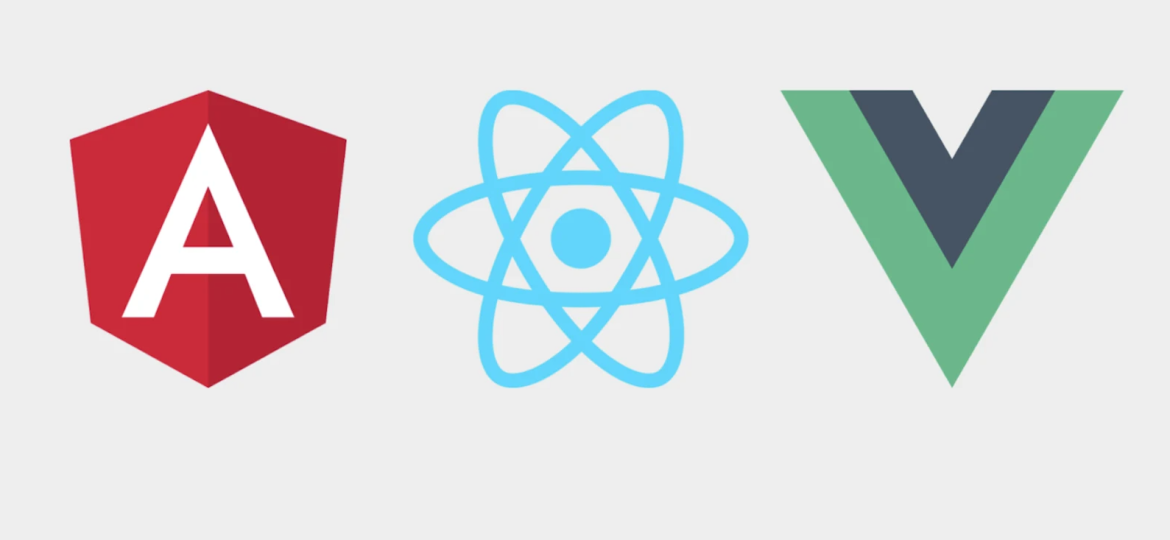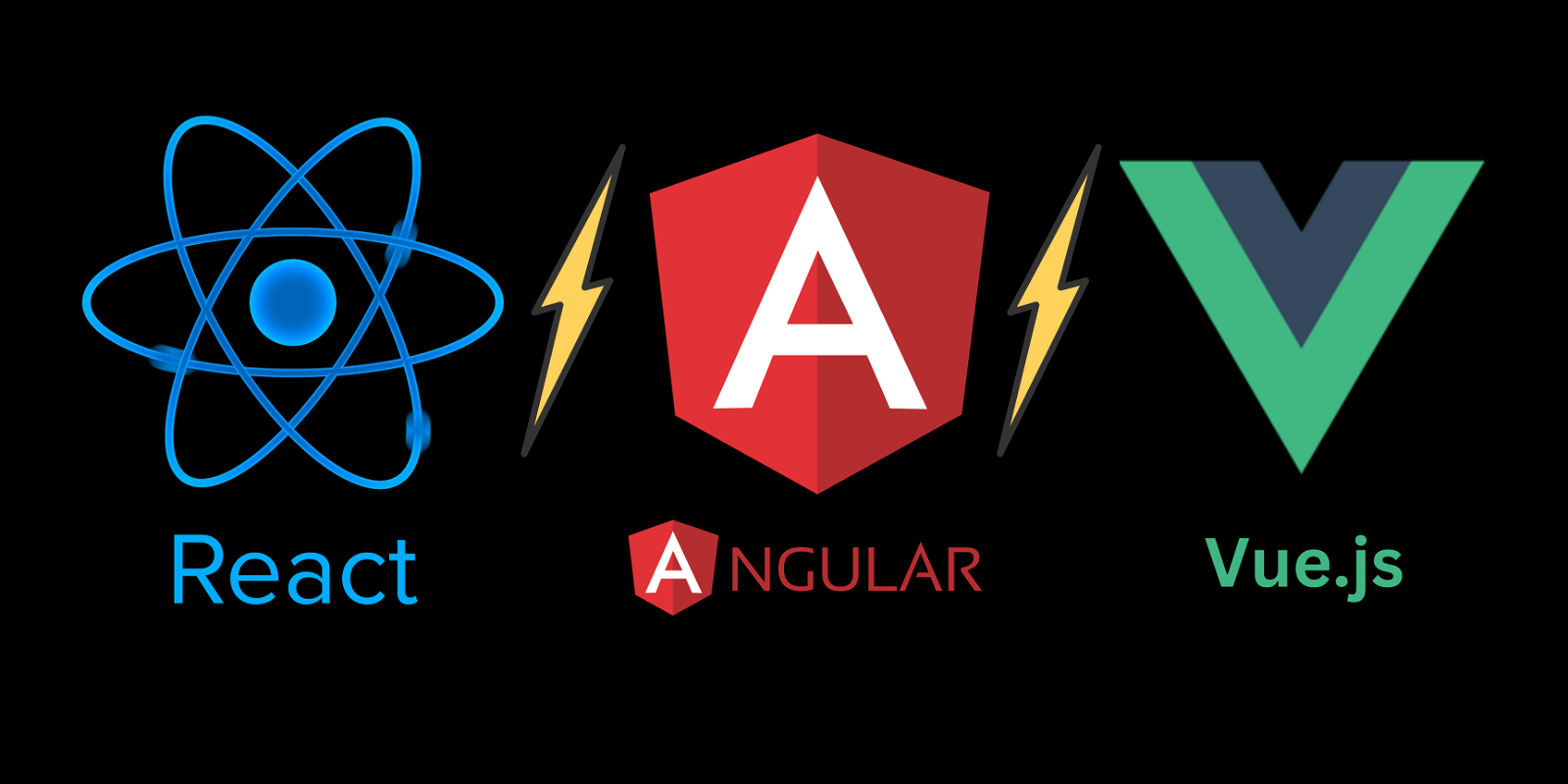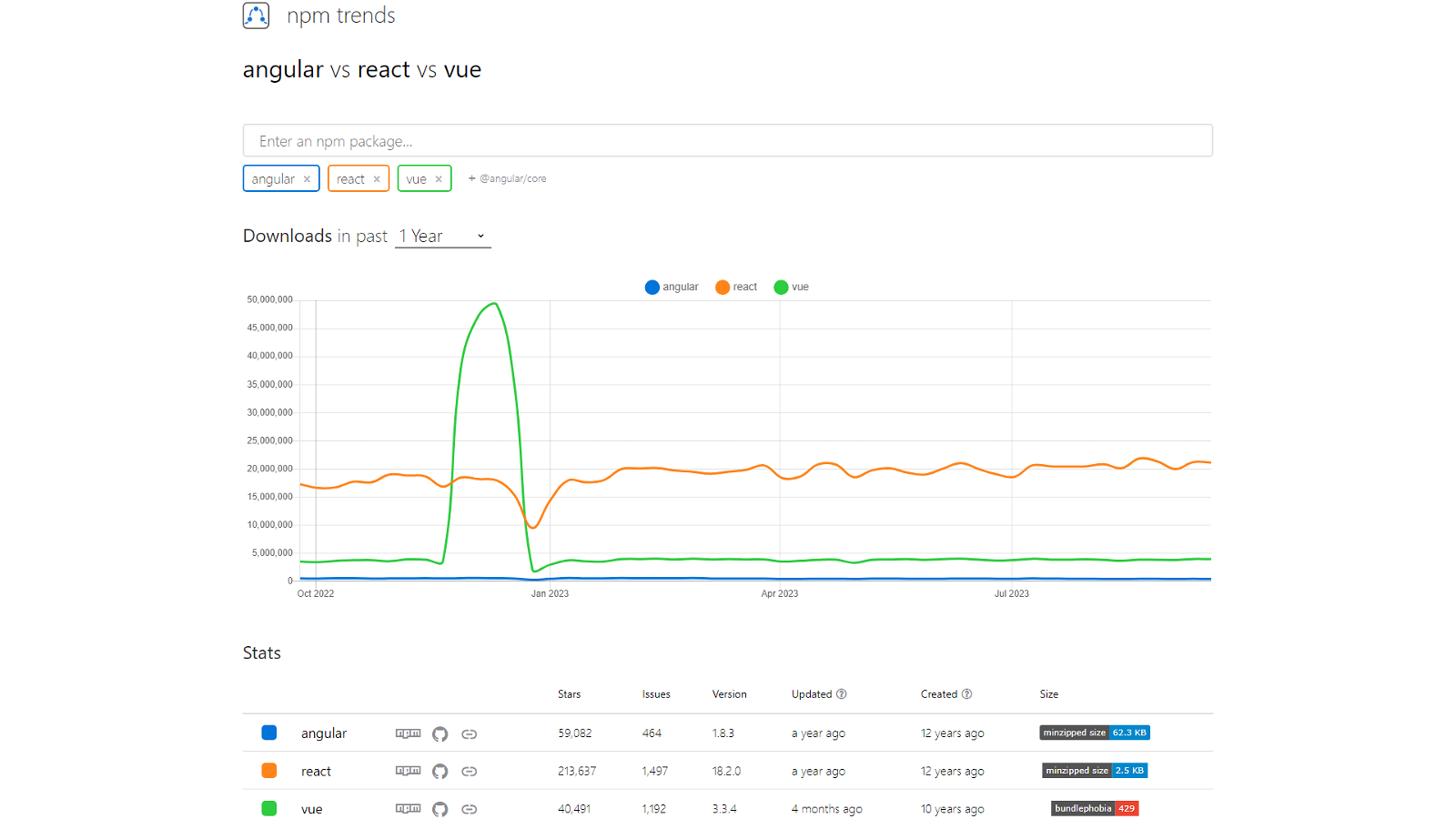
The dynamic world of web development is constantly evolving, presenting developers with a plethora of options when it comes to choosing the right framework for their projects. With an increasing demand for intuitive, high-performing, and aesthetically pleasing websites, the choice of a front-end framework has never been more crucial. As we navigate through 2023, three giants in the realm of UI library front-end frameworks—React (UI Library), Angular, and Vue—continue to dominate the discussion. Each comes with its unique features, philosophies, and ecosystems, making the decision a complex one that goes beyond mere technicalities. Here we will deep dive into the comparison of React vs Angular vs Vue.
Table of contents
- React vs Angular vs Vue
- Popularity and Community Support: React vs Angular vs Vue
- Learning Curve: React vs Angular vs Vue
- Performance Metrics: React vs Angular vs Vue
- Flexibility and Design Philosophy: React vs Angular vs Vue
- Ecosystem: React vs Angular vs Vue
- Coding Syntax Differences: React vs Angular vs Vue
- State Management
- Community Contributions: Plugins and Extensions
- Job Market Trends
- Real-World Use-Cases
- Server-Side Rendering (SSR) Capabilities of React, Angular, and Vue
- Impact of Server-Side Rendering (SSR) on SEO
- Conclusion:
Selecting the right framework can be a game-changer, not just for developers but for businesses as a whole. It can influence team productivity, long-term maintainability, and ultimately, the user experience—a critical factor in today’s digital landscape. This is especially true for an experienced design company in LA, where the expectations for cutting-edge, scalable solutions are significantly high.
Whether you’re a seasoned developer, a project manager, or a business owner, understanding the comparative aspects of these frameworks can provide valuable insights. Factors like syntax, performance, and state management capabilities can greatly affect the development speed and final product quality.
But there’s more to the equation—market trends, job availability, and real-world use cases further contribute to making an informed decision. Add to that the indispensable aspect of server-side rendering for SEO optimization, and the complexities multiply.
React vs Angular vs Vue
In this comprehensive analysis for 2023 on React vs Angular vs Vue, we aim to dissect the key characteristics of React, Angular, and Vue, offering a nuanced view that considers both technical and market-oriented facets. Through this lens, we will explore how each framework performs in various scenarios, what sets them apart, and most importantly, which one aligns best with your specific needs.
So, let’s delve into this comparative analysis to offer you the insights you need to make an educated choice between React, Angular, and Vue.
Popularity and Community Support: React vs Angular vs Vue
React
- Built by Facebook, React which is an open-source front-end Javascript library, has been around since 2013 and has garnered a large and active community. With a high number of GitHub stars and numerous tutorials, you’ll find a plethora of resources to troubleshoot and enhance your skills. There are also plenty of React Admin Templates available to help you kickstart your project with ease.
Angular
- Google‘s Angular has also built a solid reputation since its first appearance in 2010 as AngularJS. Although it has fewer GitHub stars than React, Angular’s community is also strong and constantly growing, supported by Google’s long-term vision.
Vue
- Vue.js, although younger, has gained rapid popularity. Created by a former Google engineer, Evan You, Vue has a vibrant community and is widely adopted in Asian markets.
Learning Curve: React vs Angular vs Vue
React
- React’s philosophy of ‘learn once, write anywhere’ makes it relatively easier to pick up. However, the ecosystem around React includes additional libraries like Redux for state management, which can steepen the learning curve.
Angular
- Angular employs TypeScript and involves a more complex setup. It has a steeper learning curve, but once mastered, offers robust features out of the box like two-way data binding and dependency injection.
Vue
- Vue is designed to be incrementally adoptable, making it easier for a beginner to pick up and integrate with other projects and libraries. While working with VueJS, you can also use the Vue admin template for your projects & professional web apps. It can be a great learning tool for beginners as well as for pro developers.
Performance Metrics: React vs Angular vs Vue
React
- React’s virtual DOM optimization can lead to faster performance in applications with complex UI updates. However, it may require additional performance tuning and can have issues with memory consumption if not managed well.
Angular
- Angular also provides strong performance but can get a little sluggish when handling complex DOM manipulations.
Vue
- Vue offers a middle ground, boasting excellent performance due to its lightweight nature and optimized re-rendering processes.
- Vue’s performance is often cited as being better than Angular but slightly behind React. Vue’s reactivity system and optimized re-rendering processes help keep performance snappy.
Flexibility and Design Philosophy: React vs Angular vs Vue
React
- React ecosystem provides more flexibility but less guidance. It offers you the freedom to choose your tools, libraries, and architecture.
Angular
- Angular is more opinionated and comes with a set of predefined practices and tools, that enforce a particular project structure.
- Angular applications can sometimes become sluggish with complex DOM manipulations. That said, Angular’s built-in features like Ahead-of-Time (AOT) compilation can significantly improve performance.
Vue
- Vue provides a balanced approach by offering an incrementally adoptable ecosystem that can also fully power sophisticated Single-Page Applications when needed.

Ecosystem: React vs Angular vs Vue
React
- The React ecosystem is vast and diverse, partly because it is backed by Facebook. There are abundant third-party libraries and tools available.
Angular
- The Angular ecosystem is also robust, largely owing to its long history and Google’s support.
Vue
- The Vue ecosystem is growing fast but is not as expansive as React’s or Angular’s. However, it provides all the essential requirements for a full-fledged application.
Output
- React offers flexibility and a large community, Angular provides an opinionated but robust framework, and Vue sits somewhere in between, offering an easier learning curve and good performance. The choice among these three would largely depend on your specific needs, the complexity of your project, and the expertise of your development team.
Coding Syntax Differences: React vs Angular vs Vue
React
React employs JSX, an XML-like syntax extension for JavaScript. Components are the basic building
blocks, and they maintain their own state. React components can be functional or class-based, but
the community is increasingly moving towards functional components with hooks for state
management.
JSX
function HelloWorld() {
return <h1>Hello, world!</h1>;
}Angular:
Angular uses TypeScript and embraces traditional programming concepts like classes and decorators. It has a template-based syntax that feels closer to HTML.
Typescript
@Component({
selector: app-root',
template: <h1>Hello, world!</h1>",
})
export class AppComponent {}Vue
Vue also employs template-based syntax. Components in Vue have a specific structure that separates the template, script, and styling.
HTML
<template>
<h1>Hello, world!</h1>
</template>
<script>
export default {
ne: 'App', name
};
</script>
State Management
React
- React’s built-in state management is relatively simple but scalable. For more complex state management, libraries like Redux or Zustand are often used. In case you don’t want to use Redux, there are also some useful Redux alternatives available for better state management.
Angular
- Angular provides services and dependency injection for state management. More complex applications might use NgRx, an Angular-specific implementation of the Redux pattern.
Vue
- Vue provides a simple but effective state management system through its data object and computed properties. For complex state, Vuex is the recommended state management library.
Community Contributions: Plugins and Extensions
React
- React has a myriad of third-party libraries, covering everything from routing (React Router) to form validation (Formik).
Angular
- Angular also has a rich set of community contributions. Popular libraries include Angular Material for UI components and AngularFire for Firebase integration. Also, you will find the angular admin dashboard for your project.
Vue
- While Vue’s ecosystem is smaller, it’s growing fast. Vue Router and Vuex are standard for routing and state management, respectively, and community-created plugins are steadily emerging.
Output:
- React uses JSX and offers great flexibility, but may require third-party libraries for advanced features.
- Angular is opinionated, uses TypeScript, and has built-in functionalities that can be both an asset and a complexity.
- Vue offers a balanced approach with a simple syntax, decent performance, and a growing ecosystem.
Job Market Trends
React
- React continues to dominate the job market, especially in Western countries. Given its backing by Facebook and its widespread adoption in startups as well as established enterprises, React developers are in high demand.
- According to various job boards and statistics, React often tops the list of most sought-after skills in front-end development.
Angular
- Angular is frequently used in enterprise settings, often for large-scale applications. Organizations that require robust, scalable applications with strong typing (thanks to TypeScript) may prefer Angular. While it may not be as universally demanded as React, Angular skills are highly valued, particularly in sectors like finance and healthcare.
Vue
- Vue is gaining traction primarily in the Asian market, although adoption in the West is on the rise. While there may be fewer job opportunities when compared to React and Angular, Vue is becoming increasingly popular for small to medium-sized projects, leading to a growing demand for Vue developers.
Real-World Use-Cases
React:
Angular
- Enterprise Web Apps: Google’s internal CRM
- Financial Tools: Capital One’s dashboard
- Content Management Systems: WordPress’s Calypso UI
Vue
- Tech Websites: Alibaba, Xiaomi
- Interactive Dashboards: Grammarly
- Native Apps: Using frameworks like Weex
Server-Side Rendering (SSR) Capabilities of React, Angular, and Vue
Server-side rendering is an essential consideration for applications that require quick initial load times and improved SEO. Here’s how each framework fares in this aspect:
React
React employs several libraries to handle SSR, the most popular being Next.js. Next.js, a prominent React Server Side Generator, provides a straightforward way to render React components on the server, making it easier to achieve better SEO and performance. It is particularly well-suited for building Universal JavaScript applications, where the same code can run on both the client and the server.
Angular
Angular Universal is Angular’s solution for server-side rendering. It enables dynamic rendering of Angular applications on the server, which can improve SEO and make apps quicker to load. Additionally, it provides tools for web crawlers, offering better indexation of websites. Angular Universal can be a bit complex to set up, but it offers a comprehensive solution for SSR within the Angular ecosystem.
Vue
Nuxt.js serves a similar role in the Vue ecosystem as Next.js does in the React landscape. Nuxt provides a higher-level framework built upon Vue to handle server-side rendering more easily. With features like automatic code-splitting and static site generation, this Vue Static site generator can greatly optimize the performance of Vue applications. It is straightforward to integrate and provides various presets and configurations to speed up the development process.
Impact of Server-Side Rendering (SSR) on SEO
Server-side rendering is pivotal in improving a website’s Search Engine Optimization (SEO). Search engines like Google have web crawlers that index web pages for their search results. While modern search engines have gotten better at running JavaScript, the reliance on client-side rendering can still result in indexing issues, particularly for websites with highly dynamic content. Below are some key points on how SSR impacts SEO across React, Angular, and Vue.
Faster Initial Load Times:
SSR enables the initial page to load faster by directly serving fully-rendered HTML from the server. Faster-loading pages are favored by search engines, which can lead to higher rankings.
Improved Crawling and Indexing:
By rendering content on the server, SSR ensures that web crawlers encounter a fully rendered page, making it easier for them to crawl and index the content. This is particularly important for websites with constantly updating, real-time data.
Metadata and Social Sharing:
When a webpage’s meta tags are rendered on the server, social media platforms and search engines can easily fetch the correct metadata for sharing and indexing. Client-rendered meta tags can sometimes go unfetched, which can adversely affect the page’s SEO.
Enhanced User Experience
SSR ensures a smoother user experience by enabling quicker initial page loads. Search engines consider user experience as a ranking factor, which means better UX can result in improved SEO.
More Effective Rendering of JavaScript Features
Some advanced JavaScript functionalities may not be effectively rendered by web crawlers if they rely solely on client-side rendering. SSR can circumvent this issue by pre-rendering such features on the server.
Conclusion:
In conclusion, the landscape of front-end web development frameworks in 2023 offers a variety of robust options, each with its own strengths and weaknesses.
React provides a flexible, performance-optimized solution that dominates the job market, particularly in Western countries. It’s versatile, with a JSX syntax and a growing list of third-party libraries that extend its capabilities. React is the go-to framework for many, from startups to big enterprises, and excels in diverse use cases like social media and e-commerce platforms. When it comes to SEO, React benefits from server-side rendering through Next.js, enhancing performance, and search engine ranking.
Angular is the structured, opinionated alternative that finds its niche mostly in enterprise-level applications. It uses TypeScript and provides robust built-in functionalities, but this also comes with a level of complexity. Angular is favored in sectors requiring scalable, reliable solutions like finance and healthcare. Angular Universal serves as its solution for server-side rendering, providing enhanced SEO capabilities but at the cost of some complexity.
Vue offers a middle ground with a simple, template-based syntax and an ever-growing ecosystem. While it has fewer job opportunities compared to React and Angular, it is gaining momentum, especially in the Asian market. Vue is suitable for a wide range of projects and benefits from Nuxt.js for server-side rendering, which helps in SEO optimization and initial load performance.
In terms of server-side rendering, all three frameworks have mature solutions that significantly enhance SEO through faster load times, improved indexation, and better user experience.
Choosing between React, Angular, and Vue will depend on a variety of factors including project requirements, team expertise, and specific performance or SEO needs. Each framework offers a set of tools for server-side rendering, which is crucial for enhancing SEO and user experience.




















